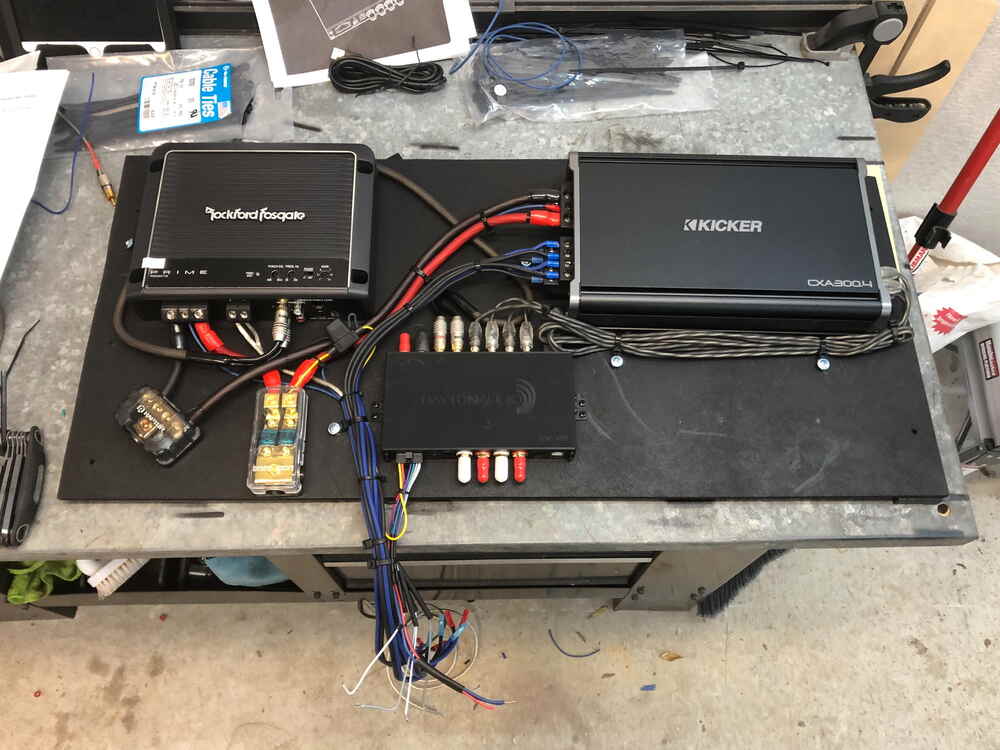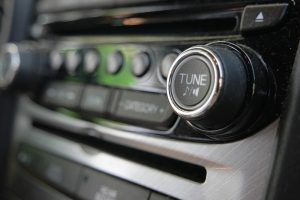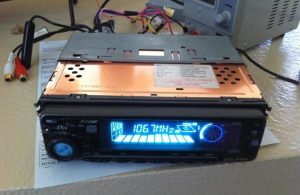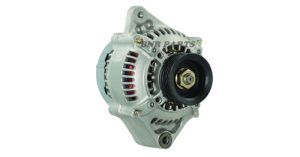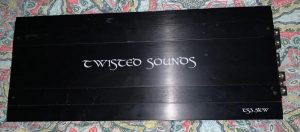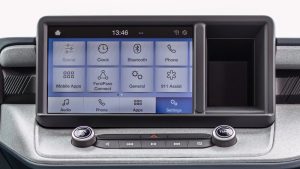Truck owners love their vehicles for countless reasons—rugged performance, off-road adventures, or simply cruising with style. But one thing that takes the driving experience to the next level is a killer audio system. A well-designed truck amp rack doesn’t just amplify sound; it organizes your setup, protects your equipment, and adds a custom touch to your ride. Whether you’re a car audio enthusiast or a weekend warrior looking to upgrade, this guide dives deep into truck amp rack ideas, offering practical tips, creative designs, and expert advice to make your audio system stand out. Let’s crank up the volume and explore how to build the ultimate truck amp rack!
Contents
- Why You Need a Truck Amp Rack
- Key Factors to Consider Before Building Your Amp Rack
- Top Truck Amp Rack Ideas for Every Style
- Step-by-Step Guide to Building Your Own Truck Amp Rack
- Tips for Optimizing Your Truck Amp Rack
- Common Mistakes to Avoid
- Popular Truck Models for Amp Rack Installations
- Enhancing Your Audio System Beyond the Amp Rack
- Where to Find Inspiration and Supplies
- Conclusion: Build Your Dream Truck Amp Rack Today
Why You Need a Truck Amp Rack
A truck amp rack serves as the backbone of your audio system. It secures your amplifiers, keeps wiring tidy, and ensures your setup looks sleek. Without a proper rack, your equipment risks damage from vibrations, heat, or loose connections. A good rack also saves space, which is critical in trucks with limited cabin or bed storage. By investing time in designing a rack, you create a functional and visually appealing solution that elevates your audio game.
Think about it: your truck endures rough terrains, sharp turns, and bumpy roads. A sturdy amp rack keeps everything in place, so your system performs flawlessly. Plus, a custom rack showcases your personality—whether you prefer a minimalist vibe or a bold, LED-lit display. Ready to get started? Let’s break down the key considerations for planning your truck amp rack.
Key Factors to Consider Before Building Your Amp Rack
Before you grab your tools, plan your amp rack carefully. A rushed setup leads to frustration and wasted money. Here are the essential factors to keep in mind:
1. Space Availability
Trucks vary in size and layout. Measure the area where you plan to install your rack—whether it’s under the seat, behind the rear seat, or in the truck bed. Compact trucks like the Ford Ranger need space-saving designs, while larger models like the RAM 1500 offer more room for creative setups. Always account for clearance to avoid blocking access to seats or storage compartments.
2. Amplifier Size and Quantity
How many amps will you install? A single amplifier for a basic subwoofer setup requires less space than a multi-amp system powering subs, mids, and highs. Check the dimensions of your amplifiers and ensure your rack accommodates them without crowding. Overcrowding causes heat buildup, which shortens the lifespan of your equipment.
3. Ventilation and Cooling
Amplifiers generate heat during operation. Without proper airflow, they overheat and fail. Design your rack with ventilation in mind—use materials like perforated metal or add small fans for active cooling. If you’re mounting the rack in an enclosed space, ensure there’s enough gap between components for air circulation.
4. Accessibility
You’ll need to access your amps for adjustments, maintenance, or upgrades. Avoid designs that bury wiring or make it hard to reach controls. Quick-release mounts or slide-out racks simplify access without sacrificing security.
5. Aesthetics
Your truck reflects your style, so why settle for a boring amp rack? Choose materials, colors, and finishes that complement your vehicle’s interior or exterior. Add LED lighting or custom logos for a personalized touch. A visually appealing rack turns heads at car shows or when friends hop in for a ride.
6. Budget
Amp racks range from simple DIY builds to high-end custom designs. Set a budget that covers materials, tools, and any professional help you might need. Don’t skimp on quality—cheap materials lead to shaky racks that fail under the stress of daily driving.
With these factors in mind, you’re ready to explore the best truck amp rack ideas. From practical to show-stopping, these designs cater to every truck owner’s needs.
Top Truck Amp Rack Ideas for Every Style
1. Under-Seat Amp Rack
For truck owners short on space, an under-seat amp rack is a game-changer. This setup tucks your amplifiers neatly under the front or rear seats, keeping them out of sight while maximizing cabin space. Use a low-profile design to avoid interfering with seat adjustments. Plywood or MDF (medium-density fiberboard) works well for the base, as both materials are sturdy and easy to cut.
To build an under-seat rack, measure the clearance beneath your seat and account for the amp’s height. Secure the rack to the floor with brackets to prevent sliding. Add rubber padding to reduce vibrations. For a sleek look, wrap the rack in automotive carpet that matches your interior. This setup is perfect for compact trucks or daily drivers who want a clean, hidden audio solution.
2. Behind-the-Seat Amp Rack
If your truck has a rear bench seat, consider a behind-the-seat amp rack. This design works well in extended cab or crew cab trucks with enough depth to house multiple amplifiers. Build a vertical rack that mounts against the back wall of the cab. Use aluminum or steel for durability, especially if you plan to add heavy amps.
To make this rack pop, incorporate LED strip lights around the edges. Choose colors that sync with your audio system’s rhythm for a dynamic effect. Ensure the rack doesn’t block access to the rear window or compromise passenger comfort. For added flair, paint the rack in a bold color or add a custom vinyl wrap with your favorite design.
3. Truck Bed Amp Rack
Got a truck bed to spare? Transform it into an audio powerhouse with a bed-mounted amp rack. This idea suits truck owners who want a show-ready setup for tailgates, car shows, or outdoor events. Build a weatherproof enclosure to protect your amps from rain, dust, and UV rays. Marine-grade plywood or aluminum is ideal for outdoor use.
Design the rack as part of a larger audio setup, including subwoofers and speakers. Add a hinged lid for easy access and lock it for security. To elevate the look, install RGB lighting or a clear acrylic cover to showcase your amps. If you use your truck bed for hauling, opt for a removable rack that slides in and out as needed.
4. Center Console Amp Rack
For a unique twist, integrate your amp rack into the center console. This idea works best for trucks with spacious consoles, like the Chevy Silverado or Toyota Tundra. Hollow out the console and build a custom rack to house a compact amplifier. Use heat-resistant materials to prevent overheating, as consoles often lack natural airflow.
This setup keeps your amps completely hidden, creating a factory-like appearance. Add a flip-up lid or sliding panel for access. For a high-tech vibe, install a small touchscreen display to monitor amp performance. This design is perfect for truck owners who value stealth and minimalism.
5. Wall-Mounted Amp Rack
In crew cab trucks, the rear wall behind the seats offers a blank canvas for a wall-mounted amp rack. This setup maximizes visibility, making it ideal for car audio competitions or show trucks. Build a sturdy frame using metal or reinforced wood, and mount it securely to the cab’s frame to handle vibrations.
To make this rack stand out, add a mirrored backplate or polished aluminum accents. Incorporate cooling fans to manage heat, especially if you’re running multiple high-powered amps. For a futuristic look, embed wireless charging pads or USB ports into the rack for added functionality.
6. Modular Amp Rack
For truck owners who love flexibility, a modular amp rack is the way to go. This design allows you to reconfigure or expand your setup as your audio needs evolve. Use slotted rails or adjustable mounts to reposition amps easily. Aluminum extrusions are lightweight yet strong, making them perfect for this purpose.
A modular rack is ideal for enthusiasts who frequently upgrade their systems or swap components. Add quick-connect wiring harnesses to simplify installation. For a polished look, anodize the aluminum in a color that matches your truck’s trim.
Step-by-Step Guide to Building Your Own Truck Amp Rack
Ready to roll up your sleeves? Follow this step-by-step guide to create a custom truck amp rack that fits your needs.
Step 1: Gather Materials and Tools
You’ll need:
- Plywood, MDF, aluminum, or acrylic (based on your design)
- Measuring tape and ruler
- Jigsaw or circular saw
- Drill and screws
- Sandpaper
- Automotive carpet, paint, or vinyl wrap
- Brackets and mounting hardware
- LED lights (optional)
- Cooling fans (optional)
Step 2: Measure and Plan
Measure the installation area and sketch your rack design. Include space for amps, wiring, and ventilation. Double-check measurements to avoid costly mistakes.
Step 3: Cut and Assemble
Cut your materials to size using a jigsaw or circular saw. Sand the edges for a smooth finish. Assemble the rack using screws or brackets. Test-fit the rack in your truck to ensure it fits perfectly.
Step 4: Mount the Amplifiers
Secure your amps to the rack using mounting brackets or Velcro strips. Ensure they’re firmly attached but easy to remove for maintenance. Route wiring neatly to avoid clutter.
Step 5: Add Finishing Touches
Wrap the rack in automotive carpet, paint it, or apply a vinyl wrap. Install LED lights or cooling fans if desired. Test the rack’s stability by shaking it gently—reinforce any weak spots.
Step 6: Install in Your Truck
Mount the rack in your chosen location using bolts or heavy-duty Velcro. Connect the amps to your audio system and test the setup. Make adjustments as needed for optimal sound and fit.
Tips for Optimizing Your Truck Amp Rack
- Use High-Quality Wiring: Invest in thick, oxygen-free copper wiring to minimize power loss and ensure clean sound.
- Add Sound Dampening: Apply sound-deadening mats to the rack area to reduce vibrations and improve audio clarity.
- Incorporate Fuse Protection: Install an inline fuse between the battery and amps to protect your system from power surges.
- Test Before Finalizing: Run your audio system for a few days to identify any issues with heat, stability, or wiring.
- Show It Off: Share your setup on social media or at car audio meetups to inspire others and get feedback.
Common Mistakes to Avoid
- Ignoring Ventilation: Overheating kills amps. Always prioritize airflow in your design.
- Overloading the Rack: Too many amps in a small space lead to clutter and poor performance.
- Skipping Measurements: A poorly fitted rack wastes time and materials.
- Using Cheap Materials: Flimsy wood or weak mounts won’t withstand the rigors of truck driving.
- Neglecting Safety: Loose wiring or unsecured amps create hazards on the road.
Popular Truck Models for Amp Rack Installations
Certain trucks are especially popular for audio upgrades due to their spacious cabins or beds. Here are a few models that lend themselves well to amp rack installations:
- Ford F-150: Ample cabin space and a large bed make it a favorite for custom audio setups.
- Chevrolet Silverado: Offers generous rear seat space for behind-the-seat racks.
- RAM 1500: Known for its luxurious interior, perfect for integrating sleek amp racks.
- Toyota Tacoma: Compact but versatile, ideal for under-seat or bed-mounted racks.
- GMC Sierra: Similar to the Silverado, with plenty of room for creative designs.
No matter your truck model, there’s an amp rack solution that fits your space and style.
Enhancing Your Audio System Beyond the Amp Rack
An amp rack is just one piece of the puzzle. To get the most out of your truck’s audio system, consider these upgrades:
- High-Performance Subwoofers: Pair your amps with powerful subs for deep, rich bass.
- Component Speakers: Upgrade your door speakers for crystal-clear mids and highs.
- Sound Processor: Use a digital signal processor (DSP) to fine-tune your audio output.
- Battery Upgrade: A high-capacity battery or capacitor ensures your amps get consistent power.
- Custom Enclosures: Build matching subwoofer enclosures to complement your amp rack’s design.
Where to Find Inspiration and Supplies
Need ideas or materials? Check out these resources:
- Car Audio Forums: Websites like CarAudio.com or Reddit’s r/CarAV offer tips and inspiration from fellow enthusiasts.
- YouTube Channels: Search for truck audio build videos to see real-world examples.
- Online Retailers: Crutchfield, Sonic Electronix, and Amazon stock amp rack materials and accessories.
- Local Audio Shops: Visit a car audio specialist for professional advice or custom fabrication.
Conclusion: Build Your Dream Truck Amp Rack Today
A custom truck amp rack transforms your vehicle into a rolling concert hall. By carefully planning your design, choosing the right materials, and following best practices, you’ll create a setup that delivers powerful sound and turns heads wherever you go. Whether you opt for a hidden under-seat rack or a flashy bed-mounted display, the possibilities are endless. So, grab your tools, unleash your creativity, and build an amp rack that takes your truck’s audio system to the next level. Your next road trip deserves a soundtrack that rocks—make it happen!
